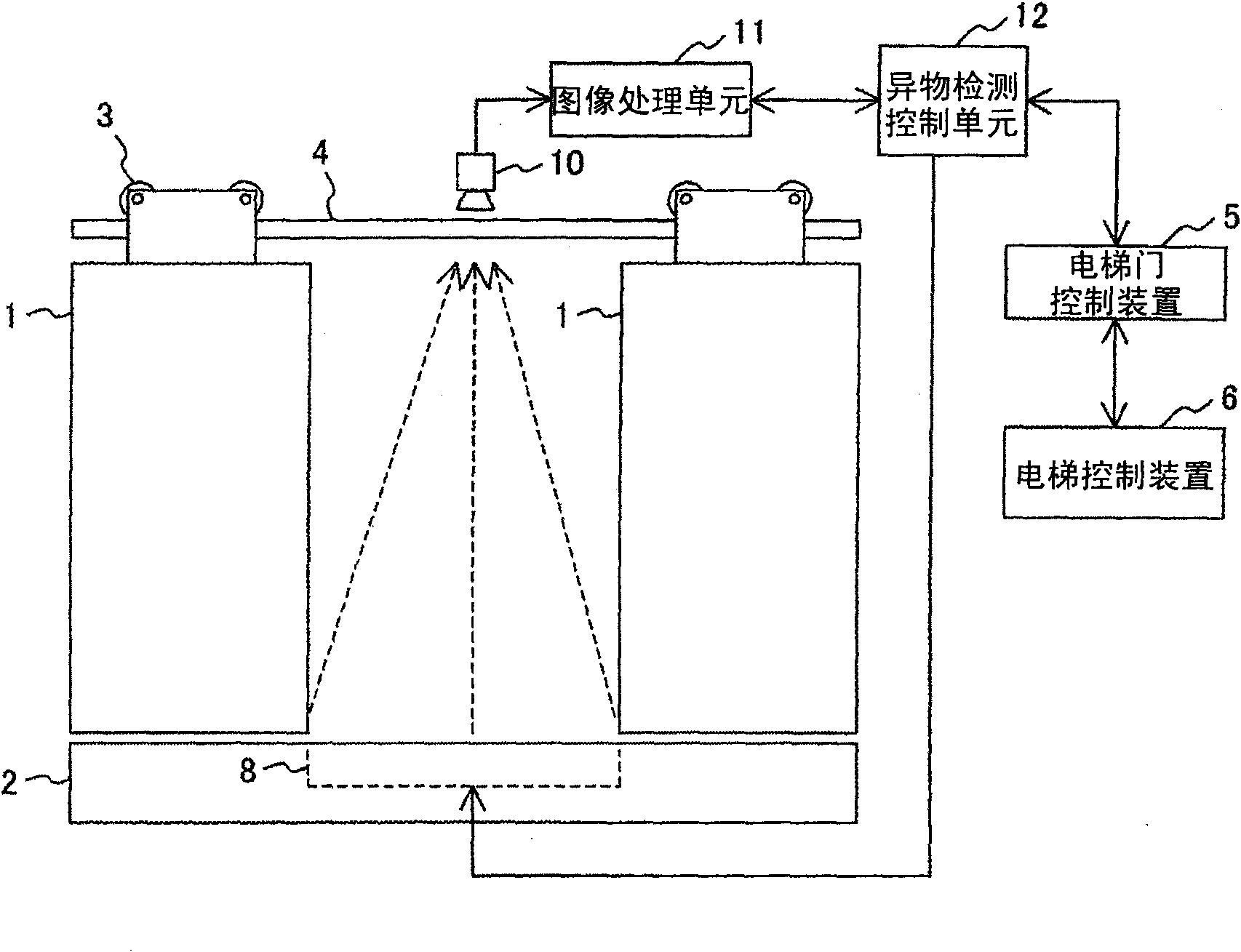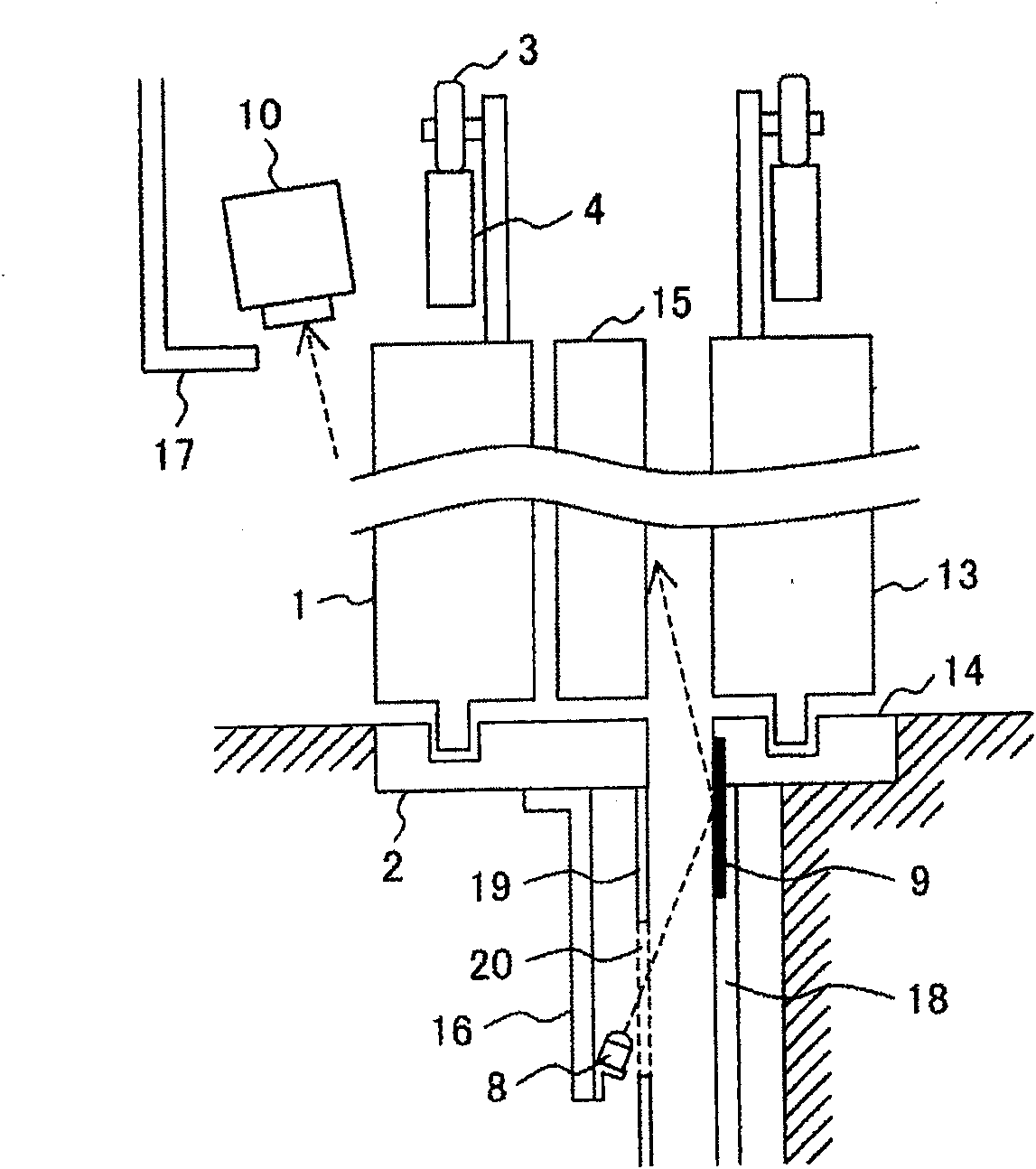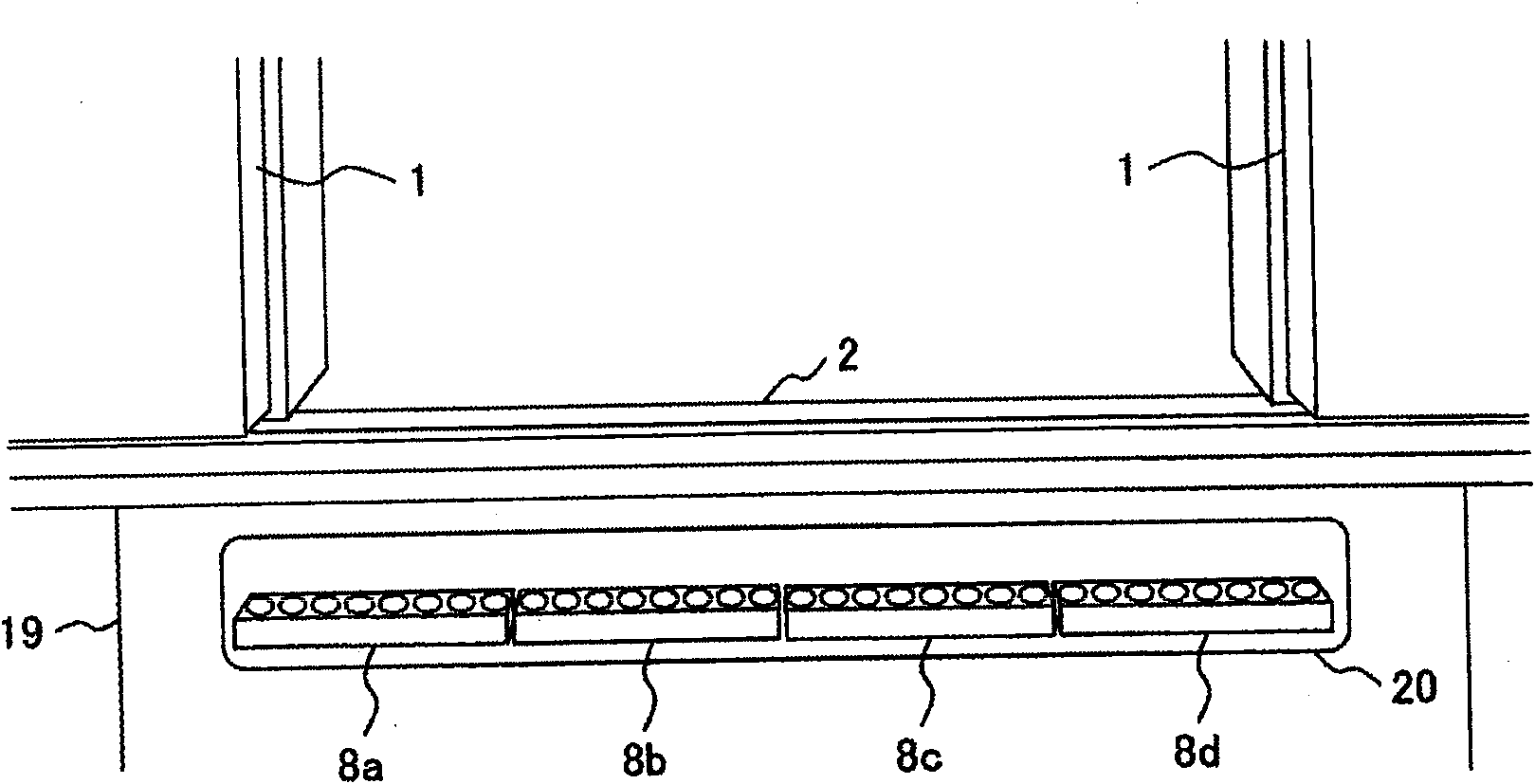Safety device of an elevator and safety control method
A safety device and safety control technology, which is applied in the field of elevator safety control and elevator safety device, can solve the problems that passengers are not easy to find and cannot remove obstacles quickly, and achieve the effect of reducing strength, reducing strength and reducing cost.
- Summary
- Abstract
- Description
- Claims
- Application Information
AI Technical Summary
Problems solved by technology
Method used
Image
Examples
no. 1 example
[0056] figure 1 It is a schematic diagram showing the structure of the elevator safety device according to the first embodiment of the present invention.
[0057] Such as figure 1 As shown, the center-divided elevator door adopting the safety device of this embodiment has an elevator door 1, a threshold that guides the lower part of the elevator door 1, and a door sill that is installed at the upper part of the elevator door 1. The elevator door pulley 3 and the elevator door guide rail 4 for the elevator door pulley 3 to travel. In addition, it also has an elevator door control device 5 and an elevator control device 6. The elevator door control device 5 is used to control the motor that opens and closes the elevator door 1 and performs sensor signals of various safety devices related to the opening and closing of the elevator door. For detection and the like, the elevator control device 6 controls the operation of the elevator car based on the state of the call button in the el...
no. 2 example
[0080] Figure 7 It is a schematic diagram showing the structure of an elevator safety device according to the second embodiment of the present invention.
[0081] Such as Figure 7 As shown, the central split elevator door adopting the safety device of this embodiment has the same figure 1 The same structure and control device. versus figure 1 The difference is that in this embodiment, as the light emitting device, in addition to the light emitting device 8 provided between the door sill of the elevator door on the car side and the door sill of the elevator door on the hall side, it also has the light emitting device 8 provided on the elevator door on the car side. The second light-emitting device 7a between the elevator door and the hall side elevator door and the third light-emitting device 7b provided on the elevator car side and located below the elevator car door when fully opened, the third light-emitting device 7b is used for the elevator car The gap between the side and ...
PUM
 Login to View More
Login to View More Abstract
Description
Claims
Application Information
 Login to View More
Login to View More - R&D
- Intellectual Property
- Life Sciences
- Materials
- Tech Scout
- Unparalleled Data Quality
- Higher Quality Content
- 60% Fewer Hallucinations
Browse by: Latest US Patents, China's latest patents, Technical Efficacy Thesaurus, Application Domain, Technology Topic, Popular Technical Reports.
© 2025 PatSnap. All rights reserved.Legal|Privacy policy|Modern Slavery Act Transparency Statement|Sitemap|About US| Contact US: help@patsnap.com



